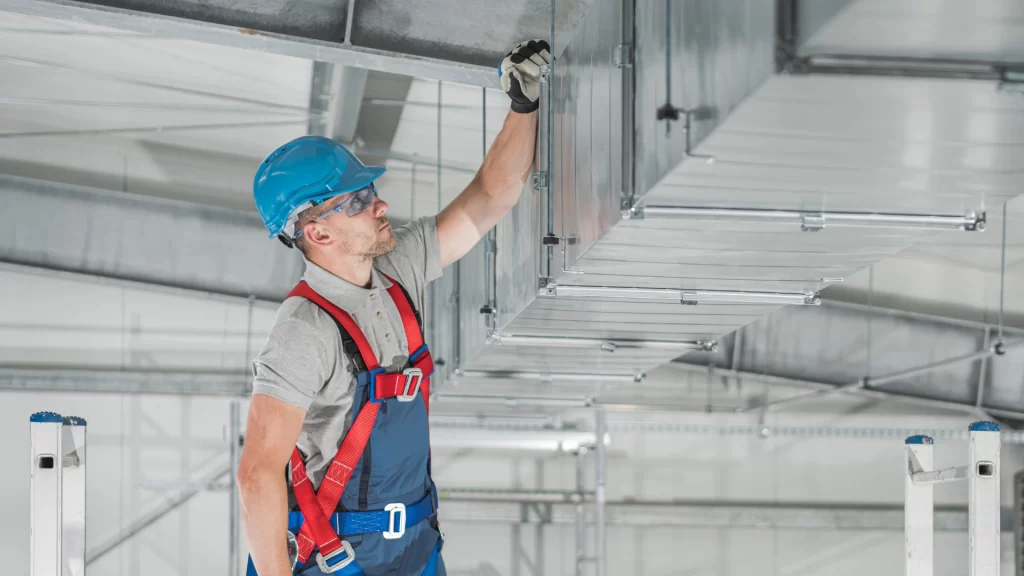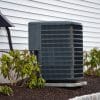Looking to enjoy a comfortable temperature in your home all year round, but your old heating and cooling system is not cutting it. It’s time to replace your existing HVAC system or install a new one if it does not already exist in your home.
Now, the question is how long does HVAC installation take? Well, that depends on a few things such as the system, the size of your home, and the local HVAC installation service.
On average, a residential HVAC installation can take 1 day up to a week depending on the complexity of the house’s structure, wires, pipes, etc. For larger commercial infrastructures, it may take up to months to complete if done from scratch.
Now that you know the time to install a HVAC system for residential homes can vary depending on numerous factors. Let’s break down what these factors are and how they affect the installation process!

What factors affect the installation time?
Every home is unique, and so is every HVAC installation project. You have to consider your home’s design, its wiring, its pipes, and its current heating and cooling system (if any).
There are also external factors such as the schedule of the HVAC contractor that you hire, the time to get the required permits to start the process, or the work progress of the general contractor in new construction.
However, in today’s article, we are only looking at the internal factors that directly affect the time to install an HVAC system.
How long does it take to install a complete new HVAC system?
Assuming your house is not equipped with any ductwork or HVAC units yet, you need to install a complete new system from scratch. The time depends on how complex the situation is, but installing new or modifying existing ductwork along with the main components can take about 3 to 5 days.
How long does it take to replace existing HVAC units?
The time it takes to replace existing HVAC units depends on the type and size of the units.
Replacing only the main components of an HVAC system, such as the furnace and the AC unit, without installing new ductwork, can take about 1 day or less. This is often referred to as an HVAC change-out.
The Steps to Install an HVAC system

Installing a new HVAC system is a custom job that requires professionals to assess the project-specific requirements. The reason is that different systems and different houses/buildings require different approaches, some would need more steps involved.
However, most residential projects would follow these general steps:
- Assess your specific needs: The HVAC installer will evaluate your current system, your home’s size and insulation, your energy usage and preferences, and your budget and goals. They will also perform a load calculation to determine the proper size and capacity of the new system for your home.
- Suggest the most suitable products: The HVAC installer will recommend the best products for your home based on their energy efficiency ratings, features, warranties, and rebates.
- Examine current ductwork and registers: The HVAC installer will inspect your existing ductwork and registers to check for leaks, damage, or obstructions. They will also measure the airflow and pressure in each room to ensure proper distribution and balance. They will suggest any repairs or modifications needed to improve the performance and efficiency of the new system.
- Determine the best placement for new system: The HVAC installer will find the optimal location for the new system components, such as the indoor unit, the outdoor unit, the thermostat, and the refrigerant lines. They will also consider factors such as noise level, aesthetics, accessibility, and safety.
- Install the new system: The HVAC installer will follow the manufacturer’s instructions and local codes to install the new system components including air conditioner installation, furnace installation, and ductwork system installation if needed. They will also connect the electrical wiring, gas lines, venting, or piping as needed. They will test the system for proper operation and adjust any settings or controls as needed.
- Ensure that the new system is running smoothly: The HVAC installer will clean up the work area and remove any debris or old equipment.
These are only general steps and your actual installation process may vary depending on your specific situation. To get a more accurate estimate and timeline, you should contact an HVAC expert in your area and schedule a consultation.
Conclusion
A standard HVAC system will feature a furnace or heat pump, air conditioning system, ducts, and vents. That means a completely new HVAC installation would take more time compared to replacing an old system, installing an existing ductwork system, or replacing just the furnace and AC. This is not to take into account the need to restructure the building or house and rewire the electrical system if needed.
A full new HVAC system installation would require a lot more time to get done because there will be spacing, measurement, and even rewiring of the existing electrical network if needed.



